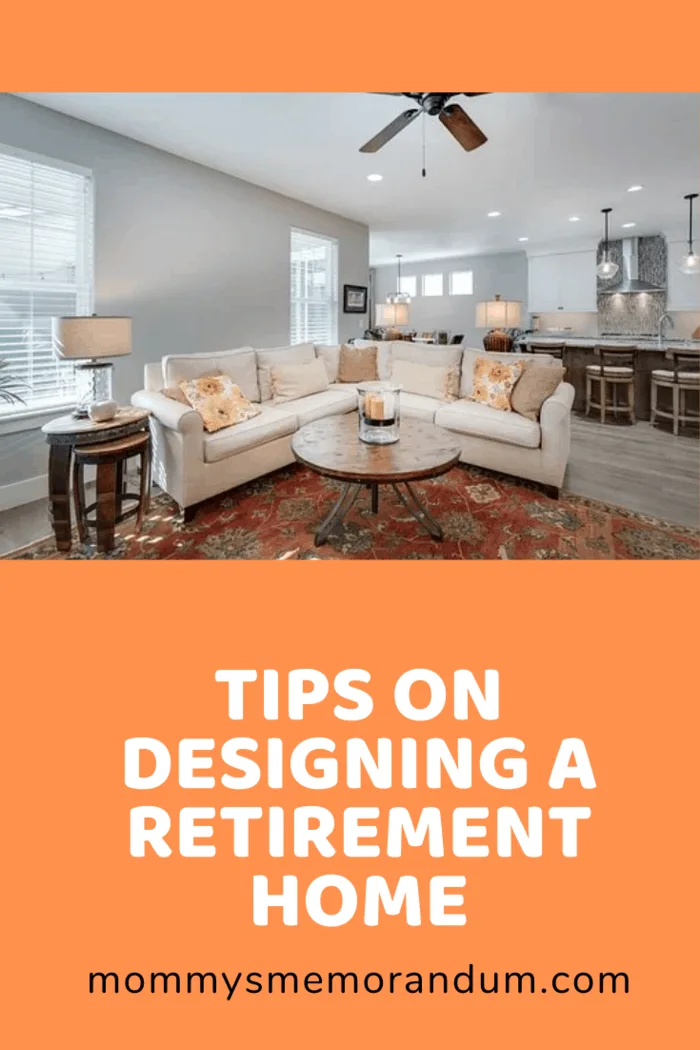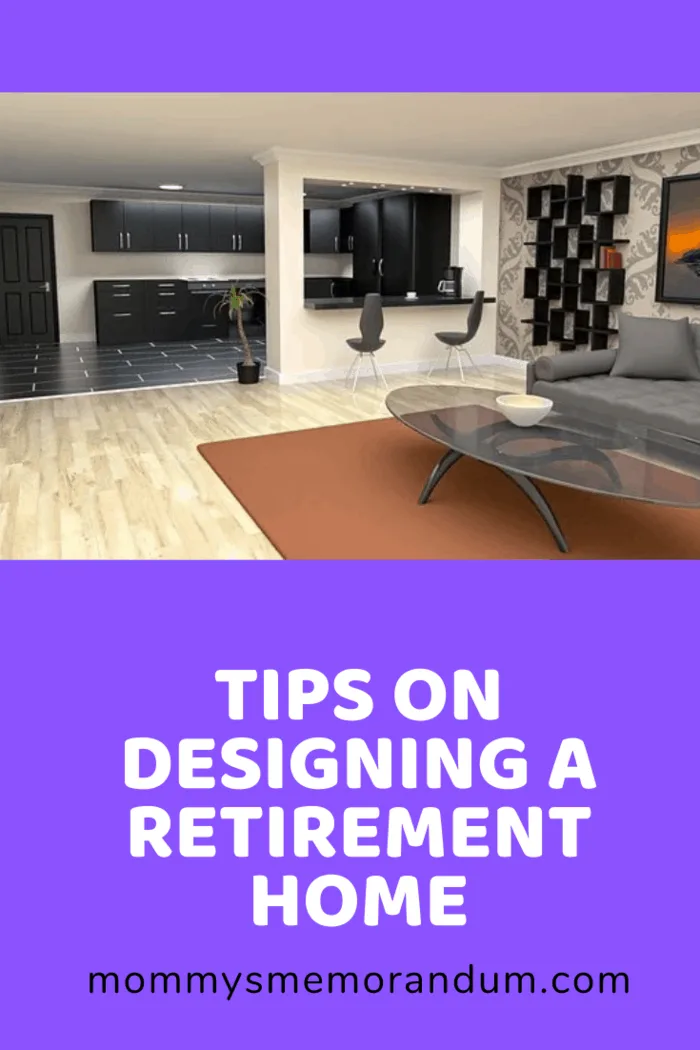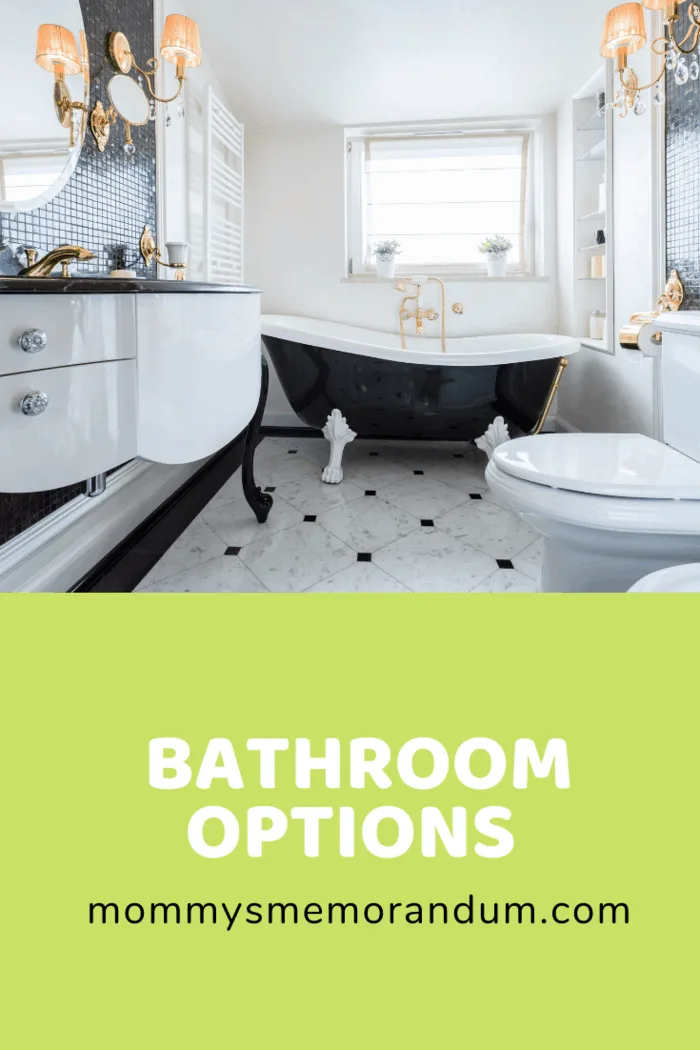Designing the perfect retirement home is a significant endeavor, whether you’re seeking to downsize or move into your long-awaited dream home. While the idea of living forever in a perpetually youthful state may be appealing, the reality is that aging is an unavoidable part of life. Retirement is a phase that many of us eagerly anticipate, but its quality and fulfillment largely depend on the plans we make for ourselves during our younger years.
Retirement doesn’t necessarily mean bidding farewell to your professional life altogether. In fact, it can be an opportunity to continue contributing to your field and even earn some income while staying engaged, physically active, and mentally stimulated. However, it’s essential to create a comfortable and enjoyable home environment where you can reap the rewards of your hard work.
Before retiring, it’s crucial to invest time and effort in designing a home that not only looks aesthetically pleasing but also evokes feelings of happiness and comfort. Your retirement home should be tailored to suit your unique needs, accommodating any lifestyle changes that may arise. But what exactly does such a home entail? How can you ensure that it meets your requirements and facilitates a fulfilling retirement experience?

Below are tips on designing a retirement home.
1. Have a Plan
If you’re planning to build, it’s about time you start organizing your finances. Of course, it may be cheaper to design your own house according to your specifications. However, you’ll still need to ensure you have the funds for it when the time finally comes—having a solid financial plan that will allow you to secure and safeguard your retirement years. Despite your retirement situation, many financial institutions are willing to help you realize your dream retirement home. Early planning is one of the first steps to safeguarding comfort, safety, and financial freedom in your sunset years.
Having a plan is a great tip for designing a retirement home because it brings numerous benefits and ensures that the final outcome aligns with your needs and desires.
Here’s why having a plan is crucial:
- Clarity and Focus: Designing a retirement home can be a complex process with numerous decisions to make. Having a plan provides you with clarity and focus, helping you prioritize your goals and make informed choices. It ensures that you stay on track and avoid getting overwhelmed by the multitude of options available.
- Tailored to Your Needs: Retirement is a unique phase of life, and everyone has different preferences and requirements. By having a plan, you can design a home that is specifically tailored to meet your needs and accommodate any anticipated changes. It allows you to consider factors like accessibility, functionality, and personal interests, ensuring that your home supports and enhances your lifestyle during retirement.
- Future-Proofing: A well-thought-out plan takes into account potential future challenges and changes in your health and mobility. By considering these factors during the design phase, you can incorporate features that promote aging in place and ensure that your home remains comfortable and accessible in the long run. This proactive approach saves you from having to make costly modifications later on.
- Budget Management: Designing a retirement home involves financial considerations. By having a plan, you can establish a realistic budget and allocate resources accordingly. This allows you to make informed decisions about the size, location, and features of your home while staying within your financial means. A well-managed budget ensures that you create a retirement home that brings you joy and financial security.
- Emotional Well-being: Retirement is a time to enjoy the fruits of your labor and find happiness in your surroundings. Having a plan for your retirement home enables you to create an environment that fosters emotional well-being. By incorporating elements that bring you joy and comfort, such as favorite colors, cherished possessions, or spaces for relaxation and hobbies, you can design a home that truly feels like your sanctuary.
In summary, having a plan when designing a retirement home empowers you to make informed decisions, tailor the space to your needs, future-proof it, manage your budget effectively, and create an emotionally fulfilling environment. It sets the foundation for a home that not only meets your present requirements but also supports your desires and aspirations for the years ahead.

2. Single Level Design Vs. Storeyed Design
When planning your retirement home design, you’ll want to decide between a single-level design and a story house. One thing to note is that aging comes with its fair share of challenges, and in your sunset years, simple tasks such as climbing steep staircases can become a painstaking undertaking. It’s, therefore, essential to have such considerations in mind. Whatever your inclinations, opting for single layout designs is most recommended. It will help prevent injuries that falling down stairs may be sustained in the long run. You also don’t want to have to deal with a ton of staircases in your senior years. This will ensure that your home is safe and comfortable for you and other occupants.
Opting for a single-level design over a storeyed design is a valuable tip when designing a retirement home due to several key advantages that it offers.
Here’s why it is an important consideration:
- Accessibility and Safety: As we age, mobility can become a challenge. A single-level design eliminates the need to navigate stairs, reducing the risk of falls and making the home more accessible for individuals with limited mobility, joint issues, or disabilities. It ensures easy navigation throughout the entire living space, including bedrooms, bathrooms, and common areas, promoting safety and independence.
- Age in Place: Aging in place refers to the ability to live independently and comfortably in one’s own home as one grows older. A single-level design supports this concept by eliminating the need to climb stairs, which can become increasingly difficult with age. By choosing a single-level home, you can create an environment that allows you to stay in your own residence for as long as possible without the need for major modifications or relocation.
- Convenience and Ease of Maintenance: A single-level home typically requires less maintenance and upkeep compared to a multi-level one. With all essential living spaces on a single floor, tasks such as cleaning, repairs, and general maintenance become more manageable and less physically demanding. This aspect is especially beneficial as you age and may prefer to minimize the effort required to maintain your home.
- Flexibility and Adaptability: Single-level designs offer greater flexibility in terms of layout and room configurations. They allow for spacious, open floor plans that can accommodate various lifestyle needs, such as hosting gatherings or adapting spaces for hobbies or personal interests. The absence of stairs provides more design freedom and facilitates versatile use of the available space.
- Future-Proofing: When designing a retirement home, it’s crucial to consider potential changes in mobility and health. Opting for a single-level design is a proactive approach to future-proof your home, ensuring it remains suitable as your needs evolve over time. This reduces the need for costly renovations or modifications down the line, saving you both time and money.
In summary, choosing a single-level design for your retirement home enhances accessibility, safety, convenience, and adaptability. It promotes aging in place, facilitates ease of maintenance, and allows for greater design flexibility. By eliminating the barriers posed by stairs, a single-level home provides a practical and comfortable living environment that supports your well-being and independence as you enjoy your retirement years.

3. Think About the Floor Plans
When designing the floor plan for your retirement home, it’s best to consider an open one. Open floor plans are easy to maneuver and navigate, especially if you’re in a wheelchair. Combining living, kitchen, and dining areas will make accessing all your important items and comfort areas easier. Moreover, open floor plans will help you have an open line of sight rather than relying on your hearing most of the time. Additionally, you also want to ensure that the floor is slip-resistant. According to the CDC, one thing to note is that slip and fall accidents are a serious concern among the elderly. Therefore, it’s important to ensure that you’ve included slip-resistant floor surfaces in the kitchen, bathroom, and dining areas.
“Think About the Floor Plans” is an important tip when designing a retirement home because the floor plan lays the foundation for the functionality, flow, and overall livability of your home.
Here’s why it is a crucial consideration:
- Accessibility and Ease of Movement: A well-thought-out floor plan takes into account accessibility and ease of movement, which is especially important for individuals with limited mobility or physical disabilities. Wide hallways, doorways, and open spaces allow for smooth navigation and accommodate assistive devices such as walkers or wheelchairs. It ensures that your home remains accessible and promotes independence throughout your retirement years.
- Room Distribution and Privacy: The floor plan dictates how rooms are distributed and interconnected within the home. Consideration should be given to the placement of bedrooms, bathrooms, and common areas to ensure privacy and convenience. For example, locating the master bedroom away from noisy or high-traffic areas can provide a tranquil retreat. Additionally, guest rooms or multi-purpose spaces can be strategically positioned to offer privacy for visitors or potential live-in caregivers.
- Functional Spaces for Hobbies and Activities: Retirement often allows for more leisure time to pursue hobbies and activities. A well-designed floor plan takes into account dedicated spaces for these pursuits. Whether it’s a workshop, art studio, home office, or fitness area, incorporating designated spaces into the floor plan ensures that your home supports and enhances your interests and passions.
- Future Needs and Flexibility: As you age, your lifestyle and needs may evolve. A thoughtful floor plan considers future needs and allows for flexibility. For example, including a multi-purpose room that can be easily converted into a home gym, a caregiver’s quarters, or a study allows for adaptability as circumstances change. This forward-thinking approach reduces the need for major renovations or potential disruptions in the future.
- Natural Light and Views: The floor plan should also maximize natural light and capitalize on any scenic views surrounding the property. Large windows, skylights, or strategically positioned living spaces can invite ample sunlight, creating a bright and uplifting environment. Access to nature, whether through garden views or outdoor living spaces, can enhance the overall well-being and enjoyment of your retirement home.
In summary, carefully considering the floor plans when designing a retirement home ensures accessibility, privacy, functionality, flexibility, and the integration of natural elements. It sets the stage for a home that supports your lifestyle, adapts to changing needs, and fosters a comfortable and fulfilling retirement experience.

3. Lighting
Most importantly, your retirement home needs to be well-lit. Gone are the days when you used to be a night owl, spending time in the darkest places and still finding it romantic! As your eyesight changes, you’ll require cooler but brighter lights around your house. Additionally, it’s important to ensure that there will be enough natural light coming in through the windows. This means installing quality large windows. This will make accomplishing all your detail-oriented tasks during the day and at night easier. On the same note, you may also want to consider upscaling your lighting functionalities with modern remote-control technology. This will help you control the light density and easily switch lights on and off.
Lighting is an essential consideration when designing a retirement home because it directly impacts the overall comfort, safety, and well-being of its occupants, particularly as they age.
Here’s why lighting is important in a retirement home design:
- Visibility and Safety: Adequate lighting is crucial for maintaining visibility and reducing the risk of accidents, especially for individuals with age-related vision changes. Well-lit areas, both indoors and outdoors, minimize the chances of trips, falls, and collisions. Properly illuminated staircases, hallways, and entryways enhance navigation and provide a sense of security, promoting independent living.
- Task Performance: Good lighting is essential for performing various tasks effectively and comfortably. Areas such as kitchens, bathrooms, home offices, and hobby spaces require task lighting to ensure clear visibility and minimize eye strain. Task-oriented lighting fixtures, such as under-cabinet lights, desk lamps, or adjustable fixtures, enhance functionality and facilitate activities such as cooking, reading, and crafting.
- Ambient Atmosphere: Lighting sets the overall ambiance and mood of a space. It plays a significant role in creating a warm, welcoming, and comfortable environment. Adjustable lighting options, such as dimmers, allow for customization according to different activities or personal preferences. Soft, diffused lighting can create a cozy atmosphere for relaxation, while brighter lighting may be desired for social gatherings or hobbies.
- Natural Light and Connection to Outdoors: Incorporating ample natural light into the design is highly beneficial. Sunlight not only provides illumination but also offers numerous health benefits, including vitamin D synthesis and mood enhancement. Strategically placed windows, skylights, and light wells allow for the penetration of natural light, creating a connection to the outdoors and promoting a sense of well-being.
- Circadian Rhythm and Sleep: Proper lighting design can support the maintenance of a healthy circadian rhythm. Exposure to bright, natural light during the day helps regulate sleep-wake cycles, enhancing sleep quality and overall wellness. Incorporating lighting control systems that mimic natural light patterns and allow for adjustable color temperature can positively impact sleep patterns and promote a healthier lifestyle.
- Energy Efficiency: Designing a retirement home with energy-efficient lighting solutions can have long-term benefits. LED lighting, for example, consumes less energy and has a longer lifespan than traditional incandescent bulbs. Energy-efficient lighting not only reduces electricity costs but also contributes to sustainability efforts and reduces environmental impact.
In summary, thoughtful lighting design in a retirement home promotes safety, task performance, ambiance, connection to nature, sleep quality, and energy efficiency. By considering lighting as a critical element in the design process, you can create a well-lit and comfortable living environment that supports the specific needs and well-being of individuals enjoying their retirement years.
4. Home Interior Décor
You can always rely on professional insights from a trusted home interior designer.
The home interior is an important consideration when designing a retirement home because it directly impacts the comfort, functionality, and overall quality of life for retirees.
Here’s why the interior design is crucial in a retirement home:
- Comfort and Relaxation: After a lifetime of hard work, retirees deserve a home interior that prioritizes comfort and relaxation. Thoughtful interior design elements such as comfortable furniture, cozy seating areas, soft textiles, and soothing color schemes contribute to creating a serene and tranquil atmosphere. The goal is to design spaces that promote a sense of calm and rejuvenation, allowing retirees to fully enjoy their home and unwind.
- Accessibility and Ease of Use: Aging can bring changes in physical abilities, so it is important to consider accessibility and ease of use in the home interior design. This may involve incorporating features such as wider doorways to accommodate mobility aids, lever-style door handles, grab bars in bathrooms, and non-slip flooring to enhance safety and ease of movement. An accessible interior design ensures that retirees can navigate their home comfortably and independently.
- Functional and Flexible Spaces: Retirement often brings new opportunities for pursuing hobbies, interests, and activities. Designing interior spaces that are functional and adaptable is key. Consider incorporating dedicated areas for hobbies or crafts, a home office for continued professional pursuits or personal projects, or flexible spaces that can easily transform for different uses. This allows retirees to create personalized spaces that support their lifestyle and interests.
- Storage and Organization: Downsizing or transitioning into a retirement home often means managing a smaller living space. Effective storage solutions and organization strategies are vital to maximize usable space and minimize clutter. Well-designed closets, cabinets, and storage systems can help retirees keep their home tidy and organized, ensuring that belongings are easily accessible and reducing unnecessary stress.
- Personalization and Emotional Well-being: The interior design of a retirement home should reflect the personality and preferences of its occupants. Personalization plays a significant role in creating a sense of belonging and emotional well-being. Incorporating cherished mementos, displaying artwork or photographs, and using colors or materials that resonate with the individual’s taste all contribute to creating a space that feels like home and promotes happiness and contentment.
- Age-Friendly Design: A retirement home interior should prioritize age-friendly design principles. This includes incorporating good lighting, minimizing trip hazards, using slip-resistant flooring, and ensuring comfortable seating with appropriate back support. Ergonomic furniture and thoughtful placement of amenities within reach can enhance overall comfort and convenience.
In summary, the home interior design of a retirement home directly impacts comfort, accessibility, functionality, and emotional well-being. By considering aspects such as comfort, accessibility, functionality, personalization, storage, and age-friendly design, you can create an interior that supports retirees in enjoying a fulfilling and enjoyable lifestyle in their home during their retirement years.

Final Thoughts
Now, as you can see, it takes a lot of brainstorming to make your retirement dream house a reality. You’ll need a good plan, ensure that your finances are in order, and the above tips for insights. It doesn’t have to be as written above. But you can own the above pointers and make your retirement home an abode that will last for ages to come.
Designing a retirement home is an important endeavor that requires careful consideration and planning. By following key tips such as having a plan, choosing a single-level design, thinking about floor plans, considering lighting, and focusing on the home interior, you can create a space that caters to your needs, enhances your well-being, and supports your desired lifestyle during retirement.
Having a plan ensures that your retirement home aligns with your goals and priorities, both in terms of design and budget. Opting for a single-level design promotes accessibility, safety, and future-proofing, allowing you to age in place comfortably. Thoughtfully considering floor plans helps create functional, adaptable, and well-connected spaces that accommodate your current and future needs. Paying attention to lighting enhances safety, visibility, and ambiance, while the home interior design fosters comfort, personalization, and emotional well-being.
Remember, your retirement home should be a sanctuary that reflects your preferences, supports your activities, and provides a comfortable and enjoyable living environment. Whether you’re downsizing or creating your dream home, thoughtful design choices can make a significant difference in enhancing your retirement experience. Embrace the opportunity to create a space that truly meets your needs and brings you joy in this exciting phase of life.
